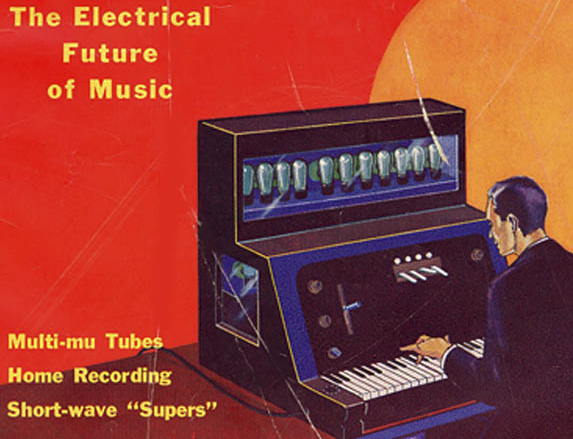 When you think of ‘early electronic instruments,’ what period comes to mind? European tape music of the 1950s? Academic electronic music labs of the 1960s? How about 1931?
When you think of ‘early electronic instruments,’ what period comes to mind? European tape music of the 1950s? Academic electronic music labs of the 1960s? How about 1931?
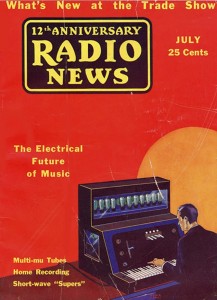 Download a five-page article from Radio News 1931, on ‘The Electrical Future Of Music.’
Download a five-page article from Radio News 1931, on ‘The Electrical Future Of Music.’
DOWNLOAD: Radio_News_3107_Electronic_Music
It’s interesting to see her how the focus is primarily on the creation of instruments on which one could perform western tempered music (as opposed to music concrete or noise-music). Although those more avant garde approaches to electronic music would come soon, this earlier approach – the electronic (as opposed to bellows) organ, the violin-simulating theremin – seems to be what has won out. Eighty years later, most of us are not usually listening to atonal clusters of carefully organized noise – we’re still mostly listened to very diatonic, 4/4 folk-songs (essentially) performed and presented via wholly electronic means.
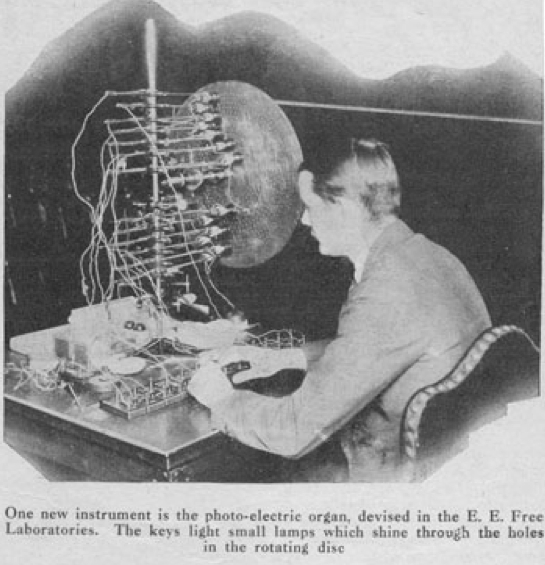
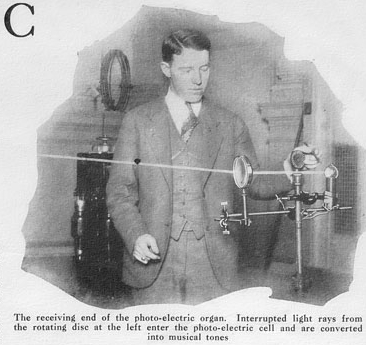 Above: the photo-electric organ
Above: the photo-electric organ
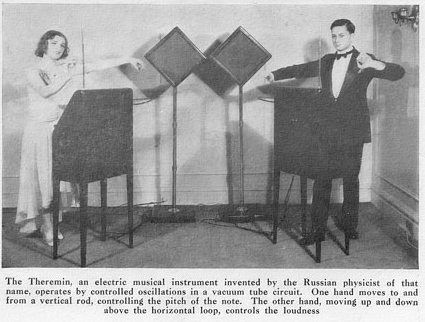 Above: the Theremin, still popular today in a variety of musical genres.
Above: the Theremin, still popular today in a variety of musical genres.
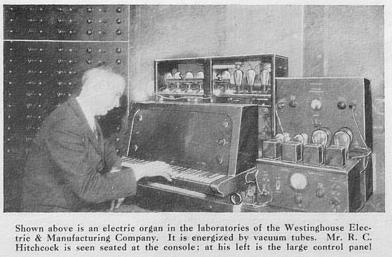 Above: an electronic organ built by Westinghouse, 1931.
Above: an electronic organ built by Westinghouse, 1931.
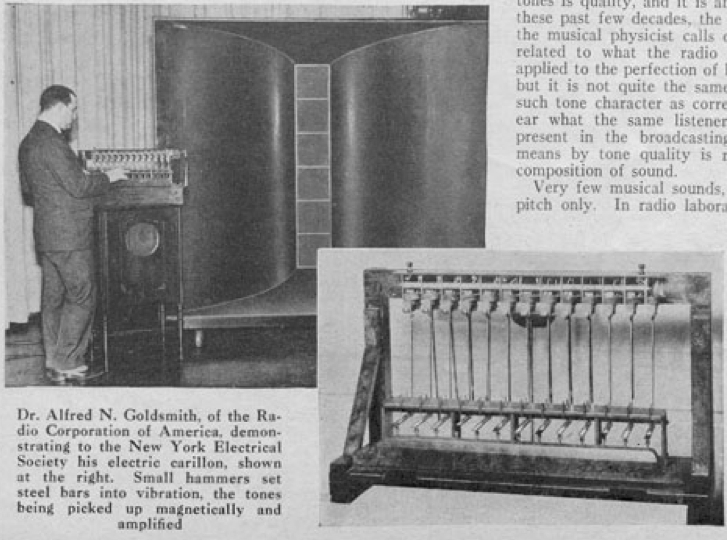 Above: an electronic Carillion as built by RCA. The principle employed here is also still very popular today.
Above: an electronic Carillion as built by RCA. The principle employed here is also still very popular today.
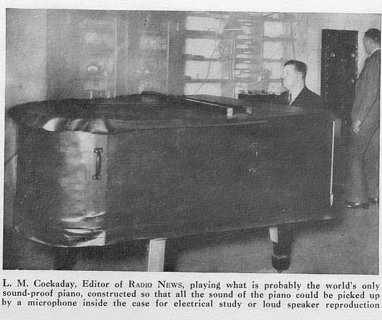 Early attempt at acoustic isolation of an instrument for electronic pickup
Early attempt at acoustic isolation of an instrument for electronic pickup